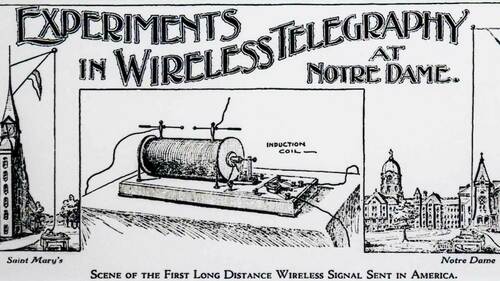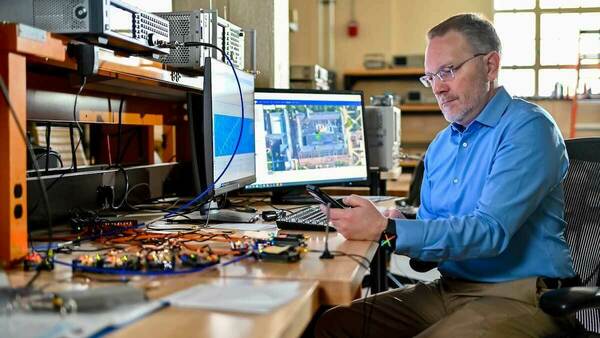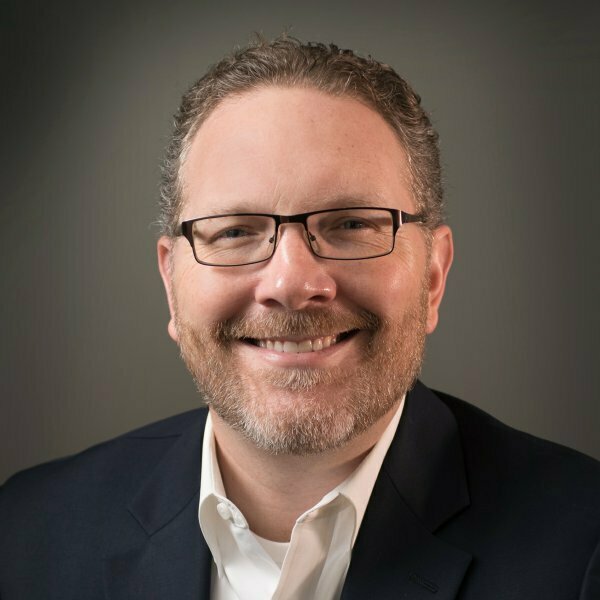
The University of Notre Dame is celebrating 125 years of wireless research, education and innovation with a modern re-enactment of one of the first long-range wireless transmissions conducted in the United States and a full-day symposium of panels and lab tours on Friday (April 19).
On April 19, 1899, Jerome Green, a professor in the University’s electrical department, transmitted a wireless message from Notre Dame’s Basilica of the Sacred Heart to Saint Mary’s College — known as Saint Mary’s Academy at the time — more than a mile away.
The experiment was a marvel for its day. Green and his students built their own radio equipment, taking inspiration from the wireless telegraphy system developed by Guglielmo Marconi. Wooden posts were used to suspend a 150-foot-long wire transmit antenna from the spire of the Basilica. Faculty and students confirmed receipt of the message using a similar antenna at Saint Mary’s Science Hall, now called Bertrand Hall.
The modern re-enactment of the transmission will also take place between the Basilica and Bertrand Hall, though the transmit antenna will be shortened since the Basilica’s spire is no longer accessible. The transmitter and receiver equipment has been updated to account for the thousands of wireless transmitters and receivers active today in the surrounding area as well as the evolution of electronic circuits over the past 125 years.
Panel discussions will address the history of early wireless experiments, contributions to wireless innovation and radio spectrum access by researchers at Notre Dame, wireless broadband digital inclusion, and the future of wireless and research initiatives. Lab tours in Cushing-Fitzpatrick Hall and Stinson-Remick Hall are being offered to showcase the University’s current research capabilities, including collaborative partnerships at the regional and national levels.

“There are a lot of issues that people take for granted, or are completely unaware of, when it comes to wireless technologies and their natural resource, the radio spectrum,” said Nick Laneman, professor of electrical engineering, co-director of Notre Dame’s Wireless Institute and director of SpectrumX, the National Science Foundation Spectrum Innovation Center. “When you communicate with family and friends, check the weather or schedule a rideshare on your smartphone, you’re not using just your mobile device and the cellular network. You’re leveraging satellite systems that collect measurements used in weather forecasting — and those satellites also rely on the radio spectrum to both sense and communicate their data. You’re relying on GPS to identify your position to inform the weather or rideshare app of your location. There are a bunch of different wireless systems you’re relying on, and they all rely on the radio spectrum.”
Numerous technology and application developments in wireless since early experiments like Green’s now require careful deliberation when it comes to allocating radio spectrum for various uses, both nationally and globally. Notre Dame is at the forefront of this critical area of research and public scholarship through its leadership role in SpectrumX, a collaboration of experts from more than four dozen organizations in academia, industry and government.
Academic voices have largely been missing from conversations on spectrum management and allocation, Laneman said. Notre Dame’s faculty and collaborative network of engineering, scientific, economic and legal expertise in SpectrumX is poised to propose technology and policy options and better inform policymakers as they evolve regulation and spectrum management approaches for the 21st century.
The University, through a parallel initiative, was selected in October to receive a Strategy Development Grant to lead the Midwest Wireless Innovation Strategy Development Consortium, part of the newly launched Regional Technology and Innovation Hubs Program announced by the U.S. Department of Commerce and its Economic Development Administration. The consortium will develop a strategy to connect, strengthen and grow a network of more than 20 partners specializing in advanced wireless technology innovation, commercialization and workforce training.
“It’s an exciting time in wireless, much like in the early days of Marconi, Green and others, but for different reasons,” Laneman said. “Now all aspects of modern life are supported by wireless applications. Government and non-government entities are all trying to make better use of the radio spectrum to sustain innovation, economic development and national security. Academics and entrepreneurs can contribute in significant ways — and support partners in government and industry — to address these technology and policy challenges, and balance the needs of these important applications.”
Through these initiatives, Notre Dame and its collaborators look forward to celebrating even more achievements in wireless over the next 125 years.
Learn more about 125 years of wireless innovation and education at Notre Dame at https://wireless.nd.edu/125-years/.
Contact: Jessica Sieff, associate director of media relations, 574-631-3933, jsieff@nd.edu
